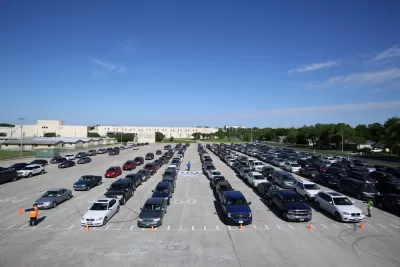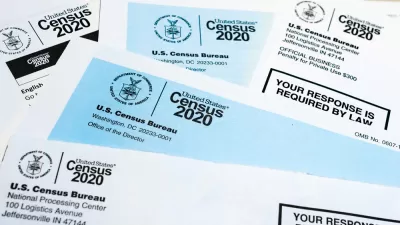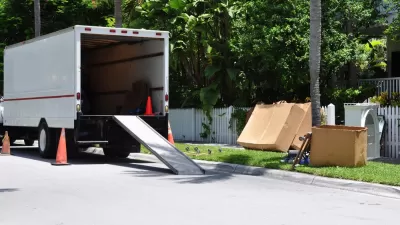Robust assistance programs kept millions of households out of poverty last year.

According to the Census Bureau, last year’s pandemic assistance programs helped millions of Americans climb out of poverty, report Ben Casselman and Jeanna Smialek. "In the latest and most conclusive evidence that poverty fell because of the aid, the Census Bureau reported on Tuesday that 9.1 percent of Americans were living below the poverty line last year, down from 11.8 percent in 2019."
This is the lowest figure since recordkeeping began in 1967, signaling the importance of government assistance in a year when millions lost jobs to the pandemic. "The decline in poverty last year was broad-based. It fell among all racial and ethnic groups, among all family types, and among Americans at every age and education level."
Rather than the federal government’s official poverty measure, these numbers reflect an alternative poverty rate, known as the Supplemental Poverty Measure, created by the Census Bureau. Unlike the official measure, this rate takes into account government assistance programs as well as regional differences in housing costs, medical expenses and other expenses.
"A White House economist, Jared Bernstein, said on Tuesday that the new poverty data should encourage lawmakers to enact the $3.5 trillion Democratic measure that includes much of Mr. Biden’s economic agenda, which the administration argues will create more and better-paying jobs."
FULL STORY: Census: Relief programs moved millions out of poverty

Alabama: Trump Terminates Settlements for Black Communities Harmed By Raw Sewage
Trump deemed the landmark civil rights agreement “illegal DEI and environmental justice policy.”

Planetizen Federal Action Tracker
A weekly monitor of how Trump’s orders and actions are impacting planners and planning in America.

Why Should We Subsidize Public Transportation?
Many public transit agencies face financial stress due to rising costs, declining fare revenue, and declining subsidies. Transit advocates must provide a strong business case for increasing public transit funding.

Understanding Road Diets
An explainer from Momentum highlights the advantages of reducing vehicle lanes in favor of more bike, transit, and pedestrian infrastructure.

New California Law Regulates Warehouse Pollution
A new law tightens building and emissions regulations for large distribution warehouses to mitigate air pollution and traffic in surrounding communities.

Phoenix Announces Opening Date for Light Rail Extension
The South Central extension will connect South Phoenix to downtown and other major hubs starting on June 7.
Urban Design for Planners 1: Software Tools
This six-course series explores essential urban design concepts using open source software and equips planners with the tools they need to participate fully in the urban design process.
Planning for Universal Design
Learn the tools for implementing Universal Design in planning regulations.
Caltrans
Smith Gee Studio
Institute for Housing and Urban Development Studies (IHS)
City of Grandview
Harvard GSD Executive Education
Toledo-Lucas County Plan Commissions
Salt Lake City
NYU Wagner Graduate School of Public Service





























